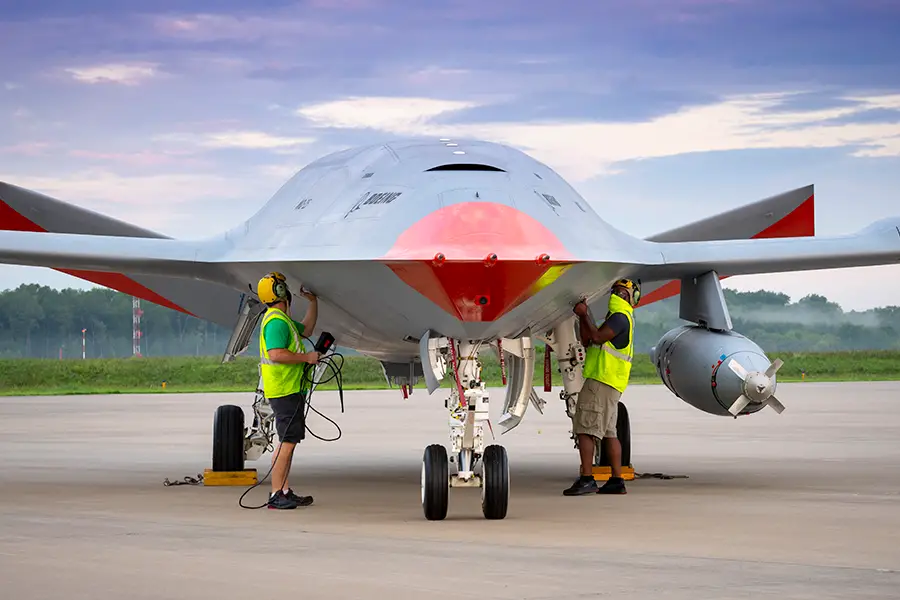[youtue https://www.youtube.com/watch?v=mTPYhxpKDJ0]
Boeing and the U.S. Navy have for the first time flown the MQ-25 T1 test asset with an aerial refueling store (ARS), a significant milestone informing development of the unmanned aerial refueler. The flight was conducted by Boeing test pilots operating from a ground control station at MidAmerica St. Louis Airport in Mascoutah, Ill. The successful 2.5-hour flight with the Cobham ARS – the same ARS currently used by F/A-18s for air-to-air refueling – was designed to test the aircraft’s aerodynamics with the ARS mounted under the wing. Future flights will continue to test the aerodynamics of the aircraft and the ARS at various points of the flight envelope, eventually progressing to extension and retraction of the hose and drogue used for refueling.
“Having a test asset flying with an ARS gets us one big step closer in our evaluation of how MQ-25 will fulfill its primary mission in the fleet – aerial refueling,” said Capt. Chad Reed, the U.S. Navy’s Unmanned Carrier Aviation program manager. “T1 will continue to yield valuable early insights as we begin flying with F/A-18s and conduct deck handling testing aboard a carrier.”
“To see T1 fly with the hardware and software that makes MQ-25 an aerial refueler this early in the program is a visible reminder of the capability we’re bringing to the carrier deck,” said Dave Bujold, Boeing’s MQ-25 program director. “We’re ensuring the ARS and the software operating it will be ready to help MQ-25 extend the range of the carrier air wing.”

The Boeing-owned T1 test asset is a predecessor to the engineering development model aircraft being produced under a 2018 contract award. T1 is being used for early learning and discovery, laying the foundation for moving rapidly into development and test of the MQ-25. Following its first flight last year, T1 accumulated approximately 30 hours in the air before the planned modification to install the ARS. Earlier this year the Navy exercised an option for three additional MQ-25 air vehicles, bringing the total aircraft Boeing is initially producing to seven. The Navy intends to procure more than 70 aircraft, which will assume the tanking role currently performed by F/A-18s, allowing for better use of the combat strike fighters.
Boeing is bringing the future of unmanned aircraft carrier aviation to the U.S. Navy with the MQ-25. An unmanned aircraft system designed for the U.S. Navy mission, it will provide the needed robust refueling capability, thereby extending the combat range of deployed Boeing F/A-18 Super Hornet, Boeing EA-18G Growler, and Lockheed Martin F-35C fighters. Boeing is the world’s largest aerospace company and leading provider of commercial airplanes, defense, space and security systems, and global services. As the top U.S. exporter, the company supports commercial and government customers in more than 150 countries and leverages the talents of a global supplier base. Building on a legacy of aerospace leadership, Boeing continues to lead in technology and innovation, deliver for its customers and invest in its people and future growth.













